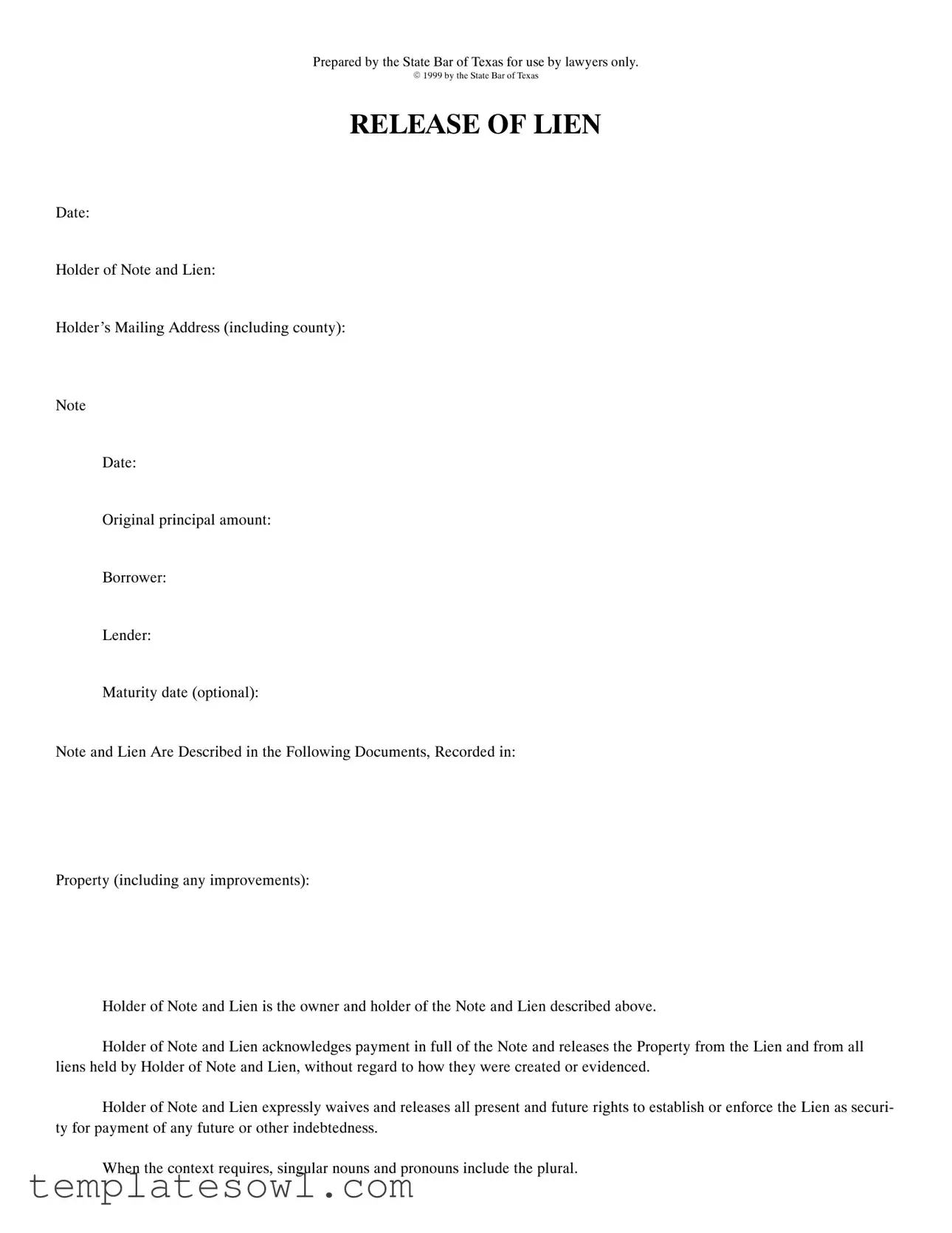What is a Release of Lien Texas form?
The Release of Lien Texas form is a legal document used to confirm that a lien on a property has been satisfied and is no longer in effect. This form marks the formal acknowledgment from the holder of the lien that they have received full payment or have otherwise agreed to release the lien. It's crucial for property owners who want to clear their titles.
Who needs a Release of Lien?
Anyone who has had a lien placed against their property in Texas may need a Release of Lien. This typically includes borrowers who have paid off their mortgage or any other debts secured by a lien. Additionally, lenders or lien holders should provide this document once outstanding obligations have been fulfilled.
How do I obtain a Release of Lien?
The document can often be prepared by a lawyer or legal professional familiar with Texas property law. The holders of the lien may also create the document themselves, provided they follow the correct format and include all necessary details, such as the original loan amount and property description.
What information is required to complete the Release of Lien?
You will need to provide several details. This includes the date of the release, the holder of the note and lien, their mailing address, the original principal amount of the loan, the borrower’s name, and a description of the property. The document should clearly indicate that the lien has been released.
Is the Release of Lien legally binding?
Yes, once properly completed and signed, the Release of Lien is legally binding. It serves as official proof that the lien has been released. To ensure its effectiveness, the document should be recorded with the county clerk's office where the property is located.
What happens if the Release of Lien is not filed?
If the Release of Lien is not filed after a debt is paid, the lien may remain on public record. This can complicate future property sales or refinancing because potential buyers or lenders may see the lien as a barrier. Filing the release is crucial for clearing the record.
Is there a fee associated with recording the Release of Lien?
Yes, there is typically a fee charged by the county clerk’s office to record the Release of Lien. Fees can vary depending on the county. It's advisable to check with the local office for the exact amount prior to submission.
Can I revoke a Release of Lien?
Once a Release of Lien has been recorded, it generally cannot be revoked. The property is thereby cleared of the lien permanently. If there are issues or disputes regarding the lien's release, it may require legal action to address the situation.
What should I do after obtaining a Release of Lien?
After obtaining a Release of Lien, make sure to thoroughly review the document to ensure all information is accurate. It's essential to file it with the appropriate county clerk's office. Keep a copy for your records, as it is proof that the lien has been released.
